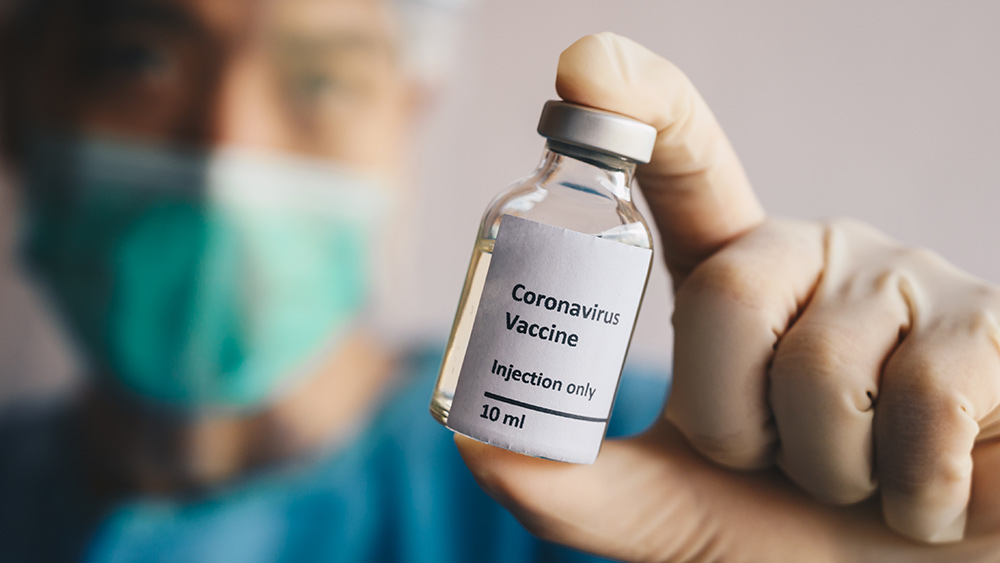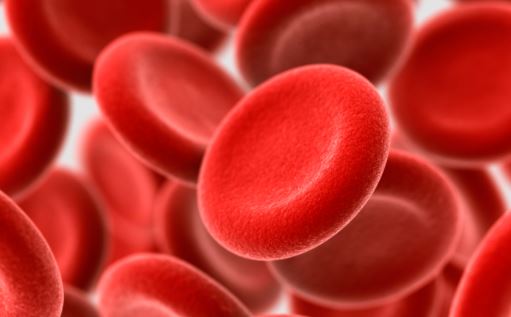Phytic acid in natural beauty products: A silent threat in your skincare routine
06/23/2025 / By Zoey Sky

- Phytic acid, a compound commonly found in plant-based products marketed as eco-friendly or organic, is raising concerns despite its “natural” label. Used in cosmetics as an antioxidant, preservative and chelating agent, phytic acid has hidden risks that outweigh its benefits.
- Phytic acid (also called phytate or IP6) is a natural phosphorus storage molecule found in plants like grains, legumes and seeds. In cosmetics, it’s leveraged to stabilize products, delay oil oxidation and replace synthetic additives like EDTA or BHT. Excessive use can lead to negative effects both topically and systemically.
- Severe side effects are rare, but concerns include its pro-oxidant behavior under heat or light, which can potentially damage skin cells.
- Found in 85 percent of vegan or paraben-free formulations, phytic acid also appears in moisturizers, shampoos, anti-aging serums and sunscreens. It’s listed under aliases like “inositol hexaphosphate” or “ascorbic acid phosphate,” so vigilant label-checking is crucial. Leading brands use it due to regulations phasing out synthetic preservatives, highlighting the tension between “natural” marketing and chemical complexity.
- Safe alternatives to phytic acid include caffeine (antioxidant), hyaluronic acid (hydration), rosemary extract (natural preservative) and vitamin E. Consumers should seek brands transparent about ingredients, avoid combining high-phytic acid products with aggressive antioxidants (like retinol or vitamin C), and prioritize diets rich in minerals to balance potential absorption.
Consumers often assume that all products labeled as environmentally friendly or organic are inherently safe. However, phytic acid, a compound lurking in many cosmetics and personal care items, poses unforeseen health and safety concerns despite being naturally occurring.
Marketed as an antioxidant, chelator and plant-based preservative, phytic acid (also known as myo-inositol hexaphosphate or inositol hexaphosphate) deserves closer scrutiny. Far from being an innocuous additive, phytic acid poses health risks, particularly when overused in consumer products.
Phytic acid: Industrial uses and toxicity
Phytic acid is a phosphorus-containing molecule found naturally in seeds, grains and legumes. Its counterparts in cosmetics are often referred to by alternate names such as inositol hexaphosphate, IP6 or phytate.
These benign-sounding terms mask its complex biological properties and potential toxicity. In addition, consumers may find it listed on product labels under its chemical name, “phytic acid,” or as “ascorbic acid phosphate,” depending on its formulation.
While phytic acid is not classified as a high-risk chemical by regulatory agencies, its effects on human physiology and the skin are nuanced. The safety issue stems from its pro-oxidant activity at high concentrations and potential to contribute to mineral deficiencies when absorbed systemically.
Phytic acid derives from the phytate compound in plant tissues that serves as chemical storage for phosphorus. In cosmetics, manufacturers capitalize on its ability to chelate (bond) minerals and act as an antioxidant that can slow the oxidation of oils and preservatives.
Phytic acid is also used to stabilize products and enhance shelf life, often replacing synthetic ingredients like ethylenediaminetetraacetic acid (EDTA) and butylated hydroxytoluene (BHT).
Phytic acid is commonly used in:
- Moisturizers – To soften skin and reduce dryness.
- Shampoos and conditioners – To remove mineral residues and clarify hair.
- Skincare creams and serums – Added as an anti-aging ingredient to boost collagen synthesis.
- Sunscreen and lotions – As a free-radical scavenger.
Phytic acid is found in 85 percent of “paraben-free” or vegan formulations, where it serves as an allegedly eco-friendly chelator and stability agent. Leading brands are compelled to use it due to strict chemical safety regulations that ban synthetic preservatives.
To avoid phytic acid, scrutinize labels for its aliases, such as “inositol hexaphosphate” or “phytate.” Overexposure to phytic acid in beauty products can cause the following issues:
Skin irritation and disruption
Phytic acid is a powerful desiccant (draws moisture from the skin) when used at high concentrations. Topical application can amplify symptoms of eczema or rosacea in sensitive individuals.
Systemic exposure risks
Topical application may lead to trace systemic absorption, especially in thin-skinned areas like the face. Long-term exposure to phytic acid could interfere with mineral absorption because it binds to minerals like zinc, magnesium and iron, which could lead to nutrient deficiencies.
Pro-oxidant effects
While its antioxidant properties are prized, phytic acid becomes a pro-oxidant under certain conditions, such as when exposed to heat or light, potentially accelerating skin aging or cell damage. (Related: The hidden dangers of iron oxides in cosmetics and personal care products.)
Natural alternatives to phytic acid
Despite being perceived as a safer natural alternative to synthetic chelators, overexposure to phytic acid comes with risks. Here are some natural ingredients that are used as phytic acid substitutes:
- Caffeine – Functions as an antioxidant without mineral-binding activity.
- Non-chelating humectants – Options like hyaluronic acid can help with hydration.
- Rosemary extract – Rosemary extract is a potent antioxidant from plant sources.
- Sodium citrate/potassium sorbate – Natural preservatives that can extend shelf life without mineral depletion.
You can also try brands that have shifted to mineral-balanced formulations, relying on vitamin E or green tea extract instead. Always prioritize formulas with minimal synthetic additives and transparent ingredient lists.
How to detox from phytic acid
Unlike neurotoxic chemicals like formaldehyde, phytic acid is water-soluble and is excreted via urine. However, repeated exposure may confuse mineral balance, particularly in vulnerable populations, such as vegetarians or those with iron deficiency.
To mitigate this risk:
- Limit topical use and opt for mineral-rich diets to offset minor absorption.
- Avoid combining phytic acid-containing products with high-dose antioxidant pills which could intensify pro-oxidant effects.
Phytic acid exemplifies a growing paradox in the beauty industry: the pursuit of “natural” often substitutes one problem with another. While it offers benefits for product stability, phytic acid’s potential risks to skin health and nutrient absorption demand closer scrutiny.
The onus is on consumers to navigate labels critically, supporting formulations that minimize chemical burdens rather than relying on catchphrases like “plant-based.”
This story is not medical advice and is not intended to treat or cure any disease. Always consult with a qualified naturopathic physician for personalized advice about your specific health situation or concern.
Visit Health Ranger Store and Brighteon Store to find lab-verified skincare products that are free of harmful chemicals like phytic acid. You can also check out NaturalNews.com for more information about cosmetic ingredients that can harm your health and how to avoid them.
Brighteon.ai, an AI model created by Mike Adams, also known as the Health Ranger, is available as a free download to be run locally and is designed to help share and decentralize knowledge. This tool aims to bypass censorship and empower people with knowledge.
If you’re searching for a platform that champions uncensored video content and free speech, particularly for discussions on nutrition, natural medicine, ingredients and related topics, visit Brighteon.com, a website that offers a space for open dialogue and exploration of these subjects without restrictions.
Brighteon.IO and Brighteon.social are two free speech social media sites that enable users to openly discuss health, nutrition, ingredients, toxicity and related topics without censorship.
Watch this clip about collagen and how it can help support healthy skin and your overall well-being.
This video is from the Health Ranger Store channel on Brighteon.com.
More related stories:
The truth about Benzyl Alcohol in beauty products.
Harmful ingredients in personal care products.
The hidden dangers of BHA in cosmetics: A closer look at this controversial additive.
Sources include:
Submit a correction >>
Tagged Under:
cosmetic ingredients, Cosmetics, Dangerous, health science, men's health, natural health, Phytic acid, poison, products, skin care, skin health, toxic chemicals, toxic ingredients, toxins, women's health
This article may contain statements that reflect the opinion of the author





















